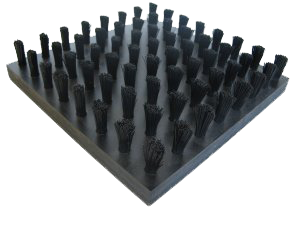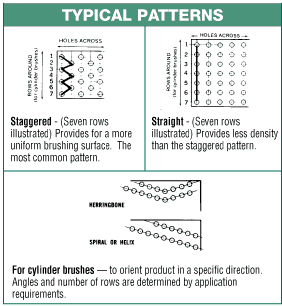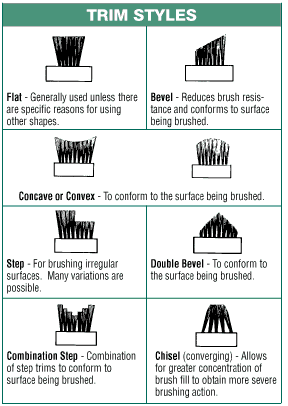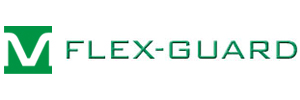Stapled Tuft Brushes
These traditional brush style (staple set brush tables and block brushes) modules, can be cut to any size to best fill your machine bed layout, AND they can be easily replaced as needed.
Stapled tuft brushes offer the brush designer a wider range of individual brush design options than any other single brush style. From single tuft to complex designs stapled brushes can be produced in small quantities on semiautomatic machines or in high volume on highly automated computer controlled tufting equipment. Practically any type and size of bristle material, block or core material, tuft pattern or brush size is within the range of possibility. When new designs require tooling, brush patterns are now generated with CAD programs that not only reduce the time needed to produce tools but also at a much lower cost.
Stapled brushes consist of tufts of filaments inserted into drilled or molded holes in a solid block or core of wood, plastic, composite, rubber or leather. The doubled over tuft is secured with a staple at the base of the hole. As the tufted pattern is filled, the brush fibers are then trimmed or cut to the required height, either as a part of the machine stapling process, or as a secondary operation at a separate trimming station. The staple material is usually made from a lacquer finish, steel wire. If the application requires special materials as additional protection against corrosion from moisture or chemicals, staples can be made from stainless steel or brass wire. Staple diameter and length is determined by the size and depth of the tuft hole, the type of bristle material being inserted and, the tuft retention requirements of the specific application.
Stapled tuft brushes are manufactured in six BASIC SHAPES or STYLES

Stapled Tuft Brush and Block Brush Designs
 Stapled tuft brushes are manufactured in six basic shapes or styles. Requirements of the application and the characteristics of the bristle material being used usually determine hole patterns and the densities of stapled brushes. Today’s computer controlled brush making machines are only limited by block shape and certain size restrictions. Tuft hole diameters can vary from as small as .086″ and up to 7/16″ and larger. Hole depth is usually at least 1-1/2 times the hole diameter but this ratio can be reduced in certain applications where stapled retention can be assured.
Stapled tuft brushes are manufactured in six basic shapes or styles. Requirements of the application and the characteristics of the bristle material being used usually determine hole patterns and the densities of stapled brushes. Today’s computer controlled brush making machines are only limited by block shape and certain size restrictions. Tuft hole diameters can vary from as small as .086″ and up to 7/16″ and larger. Hole depth is usually at least 1-1/2 times the hole diameter but this ratio can be reduced in certain applications where stapled retention can be assured.
Tuft holes are usually vertical but can be angled (flared or converged) for specific applications.
Brush parts can be trimmed to many shapes and styles based on the function of the brush. Specialized trims can be designed to conform to irregular shapes and contours.
Size ranges of stapled tuft brushes are nearly unlimited. Brushes too small or too large to be made on automated equipment can always be made in semiautomatic and hand operated machines. Stapled brushes can be single tuft, end style brushes as small as 1/8″ diameter or huge, flat brushes for metal stamping machine beds. They can be twelve feet or longer cylinder brushes (as large as six feet in diameter) for washing trucks and buses, sheet metal or carpet; or thousands of in-between sizes and shapes for countless applications. This chart lists size ranges and design options for staple set brushes that can be manufactured on our existing equipment. Special tooling can be designed to handle other requirements that fall outside this range of capabilities.


